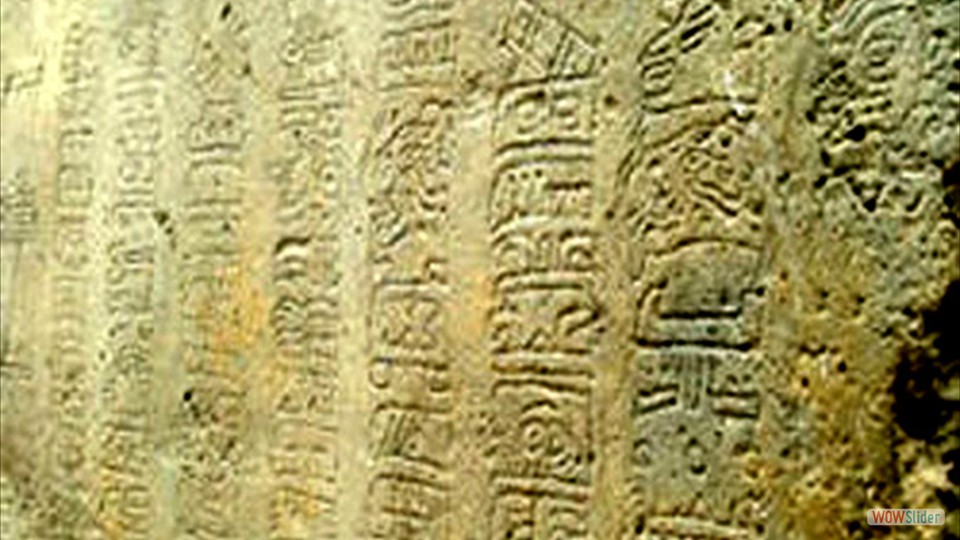La Mojarra is an archaeological site in the Mexican state of Veracruz, situated next to the coast of the gulf of Mexico in a curve of the Acula river. It was occupied since the late formative period (300 B.C.E.) until perhaps 1000 C.E. In the classic period three ovens had been constructed to make orange pottery.
La Mojarra Stela 1 is a Mesoamerican carved monument dating from the 2nd century C.E.. It was discovered in 1986, pulled from the Acula River near La Mojarra, not far from the Tres Zapotes archaeological site. The 4 foot wide by 6 foot high, four-ton basalt slab contains about 535 glyphs of the Isthmian script. One of Mesoamerica's earliest known written records, this Epi-Olmec culture monument not only recorded this ruler's achievements, but placed them within a cosmological framework of calendars and astronomical events. The right side of the stone features a full-length portrait of a man in an elaborate headdress and costume, although the bottom half of the carving is very badly weathered. Above the figure, 12 short columns of glyphs have been etched into the stone, matched by eight longer columns to the figure's right. Among these glyphs are two Mesoamerican Long Count calendar dates which correspond to May 143 C.E. and July 156 C.E.. The monument is an early example of the type of stela which later became common commemorating rulers of Maya sites in the Classic era.



 1
1 2
2